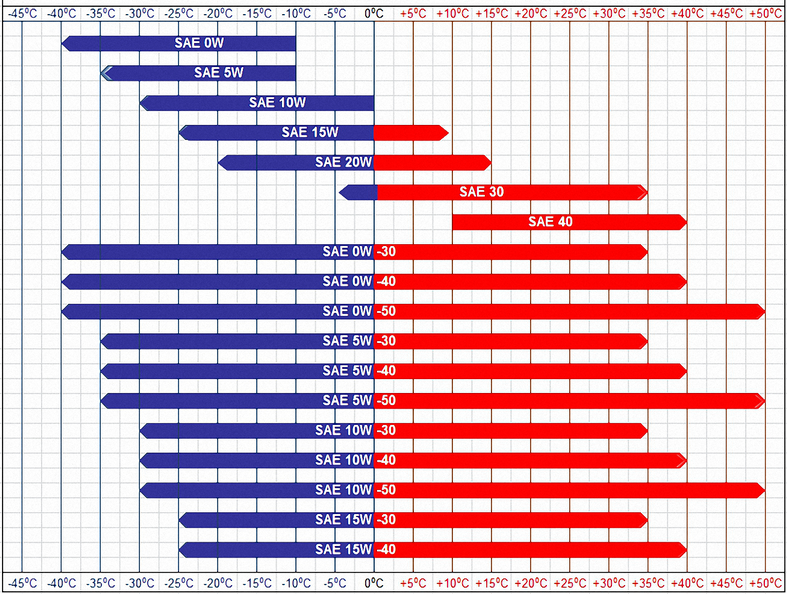For starters, in oil nomenclature, “W” does not stand for “Weight”. It stands for “Winter” and that is the key to understanding viscosity grades. A 10W-30 is a multi-grade (two viscosities) motor oil, and as the name implies, it meets more than one grade. Forty years ago, there were winter grades for cold weather and summer grades for warmer weather. A typical winter grade was 10W. A typical summer grade was 30. These oils were straight grade oils. A 10W flows well in cold weather, to protect the engine at start up, but it’s is too thin for use in the summer. A 30 grade oil, thick enough to protect in the heat, was recommended for summer use.
Then, multi-grade oils were formulated. A 10W-30 had the winter cold start flow properties of a 10W and the summer, high-temperature thickness of a 30 grade. Multi-grade oils could stay as close to the optimum viscosity over a range of temperatures – not too thick when it is cold and not too thin when it is hot.
The difference between a 0W-30 and a 10W-30 is indicated by how well each flows at lower temperatures. The viscosity of hot oil is measured using different test parameters than when the oil is cold, so the numbers after the “W” don’t relate to the numbers in front of the “W”. The difference between 10W-30 and a 10W-40 is the high temperature viscosity. Obviously, a 10W-40 is thicker than a 10W-30 at high temperature.
Armed with knowledge of viscosity grades, how can we put it to good use? Remember that using oil with a viscosity that is too high can result in excessive oil temperature and increased drag. Using an oil with a low viscosity can lead to excessive metal to metal contact between moving parts. Using the correct viscosity oil eases starting, reduces friction, and slows wear.
For even more effective start-up protection, use a synthetic 10W-40 instead of a conventional 20W-50. The synthetic 10W-40 flows easily and still maintains enough viscosity to protect piston skirts and bearings when it gets hot. The improved temperature stability of synthetics makes them a better choice for race engines and serious high-performance engines. Even with a synthetic, however, viscosity changes with temperature. Selecting the correct viscosity for an application requires knowing the operating temperature of the oil. Engines that run high operating oil temperatures require higher viscosity oil.
The difference between a 0W-30 and a 10W-30 is indicated by how well each flows at lower temperatures. The viscosity of hot oil is measured using different test parameters than when the oil is cold, so the numbers after the “W” don’t relate to the numbers in front of the “W”. The difference between 10W-30 and a 10W-40 is the high temperature viscosity. Obviously, a 10W-40 is thicker than a 10W-30 at high temperature.
Armed with knowledge of viscosity grades, how can we put it to good use? Remember that using oil with a viscosity that is too high can result in excessive oil temperature and increased drag. Using an oil with a low viscosity can lead to excessive metal to metal contact between moving parts. Using the correct viscosity oil eases starting, reduces friction and slows wear.
Armed with knowledge of viscosity grades, you can now select the right one for your application. In return, you will prevent wear, improve fuel economy, and make more horsepower. If you have any questions regarding viscosity grades and selecting the correct viscosity lubricant, please contact your Motor State Distributing sales representative at (800)772-2678 or [email protected].
